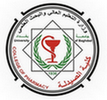The Faculty of Pharmacy discussed the Master’s Degree thesis, tagged “Evaluation of the Possible Protective Effect of Citronellol Against Rhabdomyolysis-Induced Acute Kidney Injury in Mice”. Yasmin Shakir Mahmood and her supervisor, Associate Prof. Dr. Sarmed H. Kathum Alkhateeb, in the department of pharmacology and toxicology .This study is designed to investigate the potential protective effect of citronellol against acute kidney injury due to rhabdomyolysis in mice by evaluating selected determinants of renal function, apoptosis in rat kidney tissue, gene expression of inflammation in rat kidney tissues, and microscopic study of kidney pathological tissue. Rhabdomyolysis was induced by an individual intramuscular injection of 50% glycerol (10 ml/kkg) into the unilateral posterior limb muscle. Data analysis showed that serum urea, serum creatinine concentrations, and kim-1 mRNA expression were significantly (P<0.05) elevated in the rhabdomyolysis group induced by glycerol compared to the control group, indicating renal injury and renal function deterioration. Intramuscular injection of glycerol resulted in a spike in myoglobin and creatine kinase levels compared to the control group, demonstrating that rhabdomyolysis was induced. Cleaved caspase-3 and bax levels were significantly raised in mice injected with glycerol to induce rhabdomyolysis and AKI compared to control mice, demonstrating that apoptosis is activated in the event of AKI due to rhabdomyolysis. Mice injected with glycerol showed a significant elevation in the mRNA expression of IL-1β and NF-κB compared to a control group, revealing an ongoing inflammatory event in renal tissue. Citronellol in both doses (50 and 100 mg/kg/day) significantly decreased serum urea, creatinine, and renal KIM-1 mRNA expression, indicating improved renal function. Treatment with citronellol resulted in a significant reduction of serum myoglobin and serum creatinine kinase compared to the model group II, implying ameliorating action on muscle rhabdomyolysis. In addition, citronellol resulted in a significant downregulation of both NF-κB and IL-1β expression in renal tissue, suggesting anti-inflammatory actions. Furthermore, citronellol administration showed significant attenuation of cleaved caspase-3 and Bax in the renal tissue, indicating an anti-apoptotic effect in acute kidney injury and a reno-protective effect against rhabdomyolysis-induced acute kidney injury, which may be attributed to its anti-apoptotic and anti-inflammatory effects. In addition, statistical analysis showed that there is a significant difference (P<0.05) between the two doses of citronellol in terms of serum urea, creatinine, CK, and myoglobin, suggesting a dose-dependent effect. Based on these results, citronellol exerted a potent renal protective effect against rhabdomyolysis-induced acute kidney injury. Citronellol showed powerful anti-inflammatory and anti-apoptotic effects, rendering it a promising pharmacological intervention in the inhibition of rhabdomyolysis-induced acute kidney injury.





